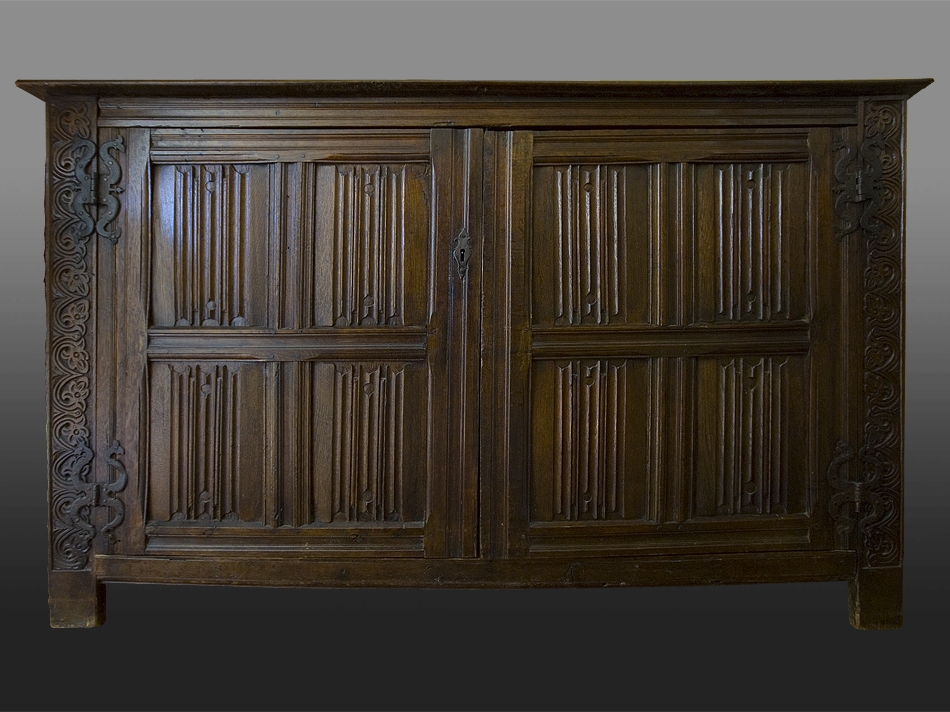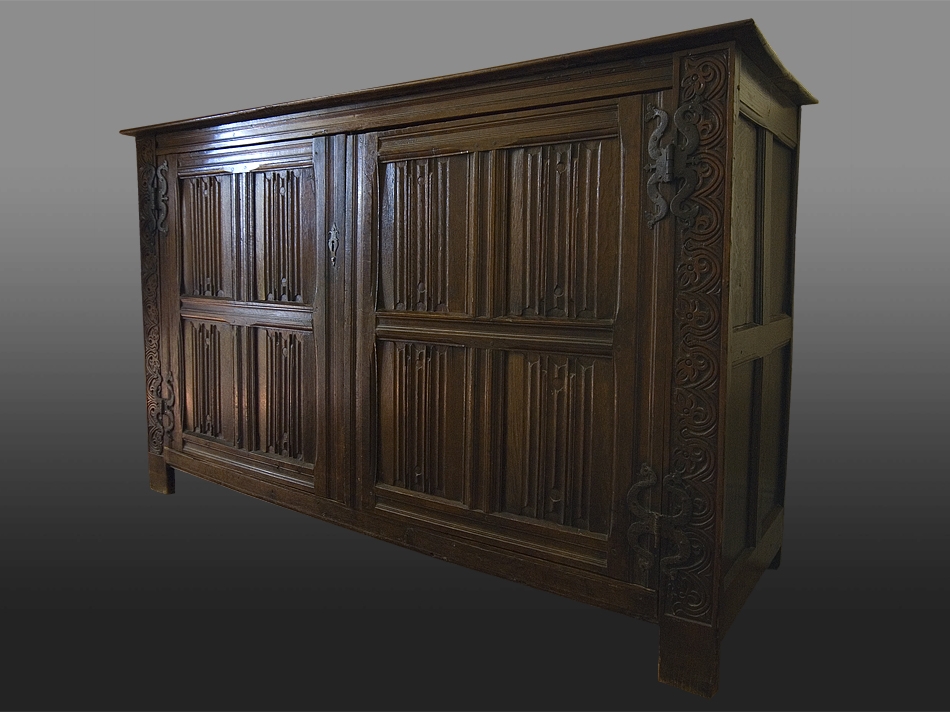Elizabeth I linenfold cupboard
Circa 1580
England, possibly Oxfordshire
W 72" × H 45.25" × D 23.5"
Stock # Marh106
SOLD
Elizabethan joined, standing low cupboard of unusually large proportions. The outward swinging doors contain four linenfold panels carved with opposing voids, cusped rolls, and the wide selvage characteristic of the work of sixteenth-century English carvers in the Home Counties. Framing members bear wide, incised channel moldings, and front stiles carved with adorst foliated scrolls. The doors hang on original, elaborate cocks head hinges, and retain original lock and escutcheon. Interior framing of ten panel back worked with incised moulding to match front and sides, probably for the purpose of display when open. Surface a deep, natural amber with minimal indication of alteration; carved elements and incised mouldings are crisp, deep, and retain full information of tool-use.
The top, an early in-use replacement, consists of a single board, the underside of which is covered with graffiti (dates and initials) ranging from the first quarter of the eighteenth- through the first quarter of the nineteenth- centuries. This reuse, together with the large size of the cupboard and its recent recovery from the vicinity of Oxford, indicates that it may have been originally employed in an institution, likely a college of academy.
Few examples of English joinery with linenfold panels, aside from the ubiquitous chests and fragments of fixed woodwork, are known. Large case-pieces are the most rarified, and usually survive in a dilapidated state. Despite its massive size and the resultant strain upon its joints, the cupboard is in remarkably sound and complete structural and surface condition. If was used in a school setting originally, it is has not long been removed from that original context.
A one-door joined , standing low cupboard with linenfold panels of closely related proportions and with similar wide channel moulding is illustrated as fig. 39 in Furniture in England: The Age of the Joiner. Closely related voided and cusped linenfold panels appear on a mid-sixteenth-century East Anglian joined door in the collection of the Victoria & Albert Museum, illustrated as cat. 251 in English Medieval Furniture and Woodwork.

